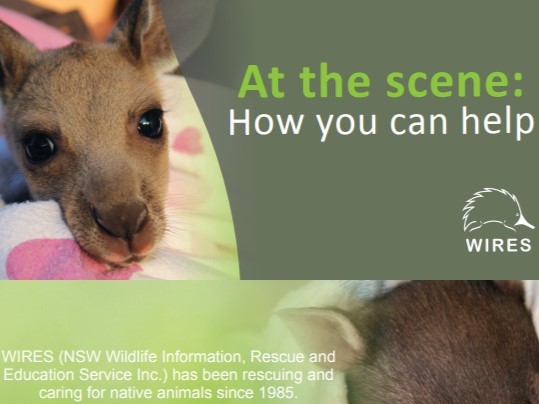AdAlta has taken an antigen-binding domain found in wobbegong shark blood and transformed it into a humanised single domain antibody that can potentially change treatments for diseases such as fibrosis and cancer.
Called i-bodies, the size and structure of the next-generation antibodies mean they can interact with difficult-to-access targets like G protein coupled receptors that are implicated in many serious diseases.
‘i-bodies are smaller, and their binding region is different from traditional antibodies,’ says Dr Tim Oldham, AdAlta’s CEO and Managing Director. ‘This gives them the ability to bind to therapeutic targets that traditional antibodies can’t. It’s a powerful drug discovery platform.’
AdAlta has used its i-body technology to develop a therapeutic for lung fibrosis, which is due for more trials in 2023. It’s also partnering with Australian and international companies to advance innovative cancer treatments.
Novel approach underpins Australian innovation success
Oldham says the Australian life sciences sector is a hub of innovation thanks in part to its leading experts, infrastructure and a cooperative research network.
‘We have world-class expertise in areas like immunology, cancer, cardiovascular diseases and the central nervous system,’ he says. ‘This creates a platform for discovering and creating new drugs and technologies.
‘We also have a very good early phase clinical trial environment. It’s high quality, and the regulatory approval process is rapid and recognised by Europe and the US. Our capital markets are well supplemented by the R&D Tax Incentive scheme.
‘We are smaller than our US and European counterparts – but that spurs us to take novel approaches to research that can result in life-changing discoveries,’ says Oldham.
Next-generation antibodies
AdAlta Limited is a clinical-stage, drug development company based in Melbourne. Its proprietary
i-body technology is a human protein that mimics the shape and structure of shark single domain antibodies.
The i-body features two loops that bind or interact with a particular target (in circulation or on a cell) that is causing disease. One of these loops is up to twice the length of human antibodies. This long loop gives the i-body a superior ability to access groves and cavities that traditional and other next-generation antibodies can’t.
i-bodies can be used as the therapeutic engine of a drug or the delivery vehicle for a therapeutic payload. It is also possible to add components to modify the i-bodies’ half-life in the body (to optimise the therapeutic profile).
Using i-bodies to develop a treatment for fibrosis
AdAlta has used its i-body technology to develop a therapeutic for lung fibrosis. Oldham says there are drugs available to treat diseases such as idiopathic pulmonary fibrosis but these only slow rather than halt the progression of the disease. They also have debilitating side effects.
‘We’ve discovered an i-body against a novel receptor that’s not been targeted for fibrosis before,’ says Oldham. ‘We’ve tuned the i-body so it’s selective for this receptor. We’ve also dialled down its effect on other biochemical pathways. That differentiates it from antibodies that are being used against the same target in other diseases.’
The therapeutic, called AD-214, has passed Phase I clinical trials as an intravenous treatment. The next clinical trials will commence towards the end of 2023. In the interim, AdAlta is developing a potentially more convenient form suitable for inhaled treatment.
Using i-bodies in potential CAR-T therapies
AdAlta also collaborates with companies to develop new therapies. One major project is with Carina Biotech, an Australian pre-clinical immunotherapy company. Carina researches and develops chimeric antigen receptor T cell (CAR-T) therapies to treat solid cancers.
‘There are six CAR-T drugs approved to treat blood cancers but none for use against solid tumours,’ says Oldham. ‘There are two challenges to developing treatments. The first is that there aren’t as many tumour-specific antigens for solid tumours as there are for blood cancers. The second is that the nature of the tumour makes it hard for an immune cell to penetrate and remain active. We solve the first challenge and Carina solves the second.’
Under the Collaboration Agreement, AdAlta will discover and optimise panels of i-bodies that bind to five solid tumour antigen targets. Carina will then incorporate the i-body sequences into CARs which it then engineers into the T cells. The i-CAR-T cells will be mixed with cancer cells that express the antigen the i-bodies target to see if the T cells can kill the cancer cells, and then used to treat mice growing these cancers to identify CAR-T product candidates.
‘i-bodies have a number of advantages for CAR-T therapies,’ says Oldham. ‘Their small size means we can access those unique targets that traditional antibodies can’t. It’s also easier to put more i-bodies into the cells so we can target multiple antigens at the same time.
‘We hope that combination will produce CAR-T cells that provide the same hope to solid tumour cancer patients as we’ve generated for blood cancer patients.’
AdAlta is due to report the first in-vitro data on the ability of i-body CAR-T cells to kill cancer cells expressing that target in the next few months.
PET diagnostic imaging agent in pre-clinical development
AdAlta is also collaborating with GE Healthcare. The two companies are advancing AdAlta i-bodies labelled with GE Healthcare radioisotopes into pre-clinical development for use as a potential PET diagnostic imaging agent. The i-bodies bind to granzyme B, a biomarker of response to cancer immunotherapies. The PET diagnostic is designed to show whether cancer immunotherapies are reactivating the immune system that the tumour has suppressed.
‘Identifying responders early with an i-body enabled granzyme B imaging agent would significantly improve therapy selection and outcomes for millions of cancer patients,’ says Oldham. ‘This program is particularly exciting for us because it has much earlier sales potential than our other programs and is driven by a multinational expert in the field.’
The Australian Government is introducing a Patent Box to encourage businesses to conduct medical and biotechnology R&D in Australia and keep associated patent profits here. From July 2022, profits derived directly from eligible medical and biotechnology intellectual property will receive an effective concessional tax rate of 17%.
From bench to bedside, do it all in Australia
Innovate. Evaluate. Expand. Do it all in Australia. Contact the Australian Trade and Investment Commission (Austrade) to find out more about Australia’s biologics capabilities.








